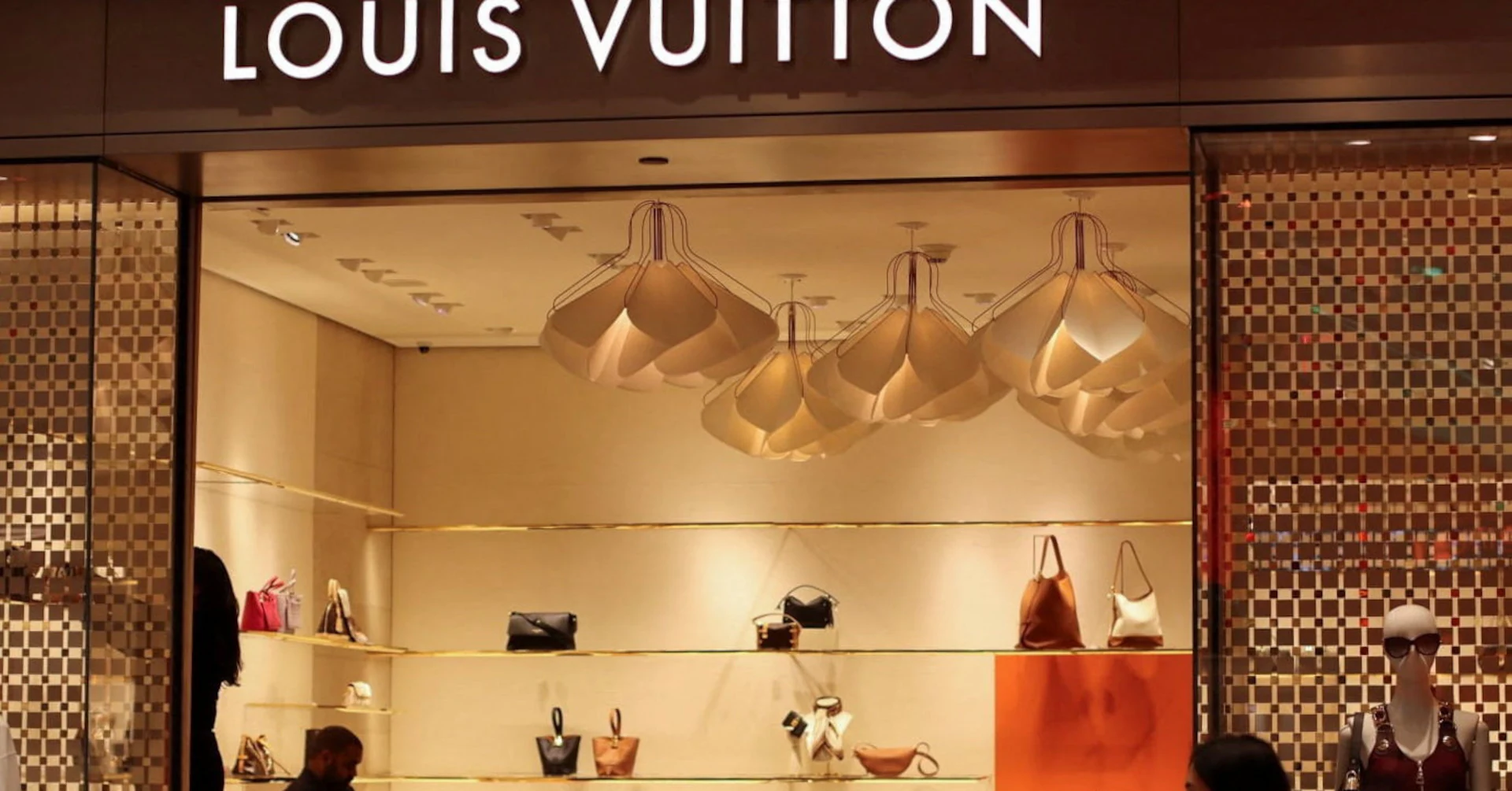
NEW YORK, Sept 19 (Reuters) – Fleur Arbel and Christophe Kairouz, both from France, were lured into Louis Vuitton’s New York flagship recently by a colorful sculpture of a monogrammed giraffe and ostrich above the store’s entrance.
But the two 24-year-olds are more likely to spend their shopping dollars elsewhere, as Louis Vuitton’s heavy logos and styles strike them as passé.
Sign up here.
“I think they failed to keep the luxury image in a way,” said Kairouz. “I think they need to create something new, original.”
Arbel and Kairouz are a tiny fraction of the Gen Z cohort born between 1998 and 2012: the luxury industry’s new frontier. The group made up 4% of global luxury spending before the pandemic; by 2030, they will account for 25%, according to Boston Consulting Group.
Executives, consultants, and analysts say this generation is harder to pin down than their predecessors. They are influenced by a global social media landscape and tend to mix-and-match goods from established names with trendier labels, shopping everywhere from TikTok to thrift stores. Legacy brands trying to attract Gen Z consumers have used influencers, pop-up shops, and affordable items like bag charms.
Tapestry’s Roe said Gen Z is not less brand-loyal than other generations, but it is harder for brands to reach these consumers because shoppers have more choices. “To break through, you need to have a strong share of voice.”
That voice is pricey: Tapestry increased its marketing spend from 3% of sales pre-pandemic to 10% this year, according to its May earnings call, but did not disclose how much it targeted Gen Z specifically.
Brands are contending with upstarts and smaller established labels like Collina Strada and Mary-Kate and Ashley Olsen’s The Row, which climbed two spots to sixth place in the most recent Lyst Index of hottest luxury brands. Lyst, a global fashion shopping platform, tracks shopper behavior and social media engagement for more than 160 million users on its site and is the “biggest dataset in fashion,” according to the company.
Hillary Taymour, creative director of Collina Strada, said they started targeting Gen Z in 2020 with digital ads. Now, Gen Z and Millennials account for 58% of its business. “It mixes sustainability with a playful, meme-driven aesthetic,” she said, citing the brand’s “inclusive casting and diverse runway shows” that make younger audiences feel like part of a community.
AFFORDABLE ITEMS DRAW IN YOUNGER SHOPPERS
Not all fashion powerhouses are being left on the shelf. Luxury labels from Kering-owned Bottega Veneta, Prada Group’s Miu Miu, and LVMH-owned Loewe continue to do well with Gen Z, as Miu Miu currently ranks first on the Lyst Index, followed by Loewe.
Miu Miu sales rose 49% in the first half of 2025 compared to the same period in 2024, capturing first-time luxury buyers with leather bag charms, which retail in the range of $240 to $1,250. “Brands like Miu Miu succeeded because single pieces mirror the brand identity, allowing Gen Z consumers to buy into the brand without having to purchase a full look,” said Achim Berg, founder of FashionSIGHTS, an industry think-tank.
Less expensive items draw in younger luxury shoppers, who are still more budget-conscious than their elders. In August, spending among Gen Z and Millennials – those born after 1978 – rose by just 0.5% from the previous year, according to Bank of America, in comparison to a 2.4% increase for Baby Boomers.
“When I shop luxury, I think about ‘what’s going to last me a long time?’ I’m spending a lot of money on an item, I want something I’m not going to get sick of in five or ten years,” said Kendall Still, a 26-year-old Los Angeles native.
Data from Gen Z researcher dcdx, which tracks mentions and interactions with user-generated brand content, showed Gucci suffered the sharpest decline on social media among top luxury labels over the past year.
Over the last two years, Kering shares have lost 43% of their value while Tapestry has more than tripled. Gucci did not respond to a request for comment.
“Legacy brands are splitting into clear winners and losers,” said Frederica Levato, senior partner at Bain & Company.
The next players to emerge globally could be Chinese brands like Uma Wang and Shushu/Tong. In Asia, newer Chinese companies are gaining traction with younger shoppers, due to their digital fluency and ability to capture China’s national identity, Chanel CEO Leena Nair said at The Economic Club of New York on Sept. 16.
“You cannot take the longevity of a brand for granted; you stay in the public consciousness and you have the iconicity because you’re relevant and timely, and constantly modern,” she said.
Reporting by Samantha Marshak; editing by David Gaffen and Anna Driver
Our Standards: The Thomson Reuters Trust Principles., opens new tab
Samantha Marshak is a New York City-based reporter and company news intern at Reuters. She covers U.S. luxury retail companies like Ralph Lauren, Tapestry, Capri Holdings, and Estee Lauder Inc, and will report on the upcoming mayoral election. She will graduate from Craig Newmark Graduate School of Journalism in December 2025, with a master’s degree in business reporting and data journalism.



